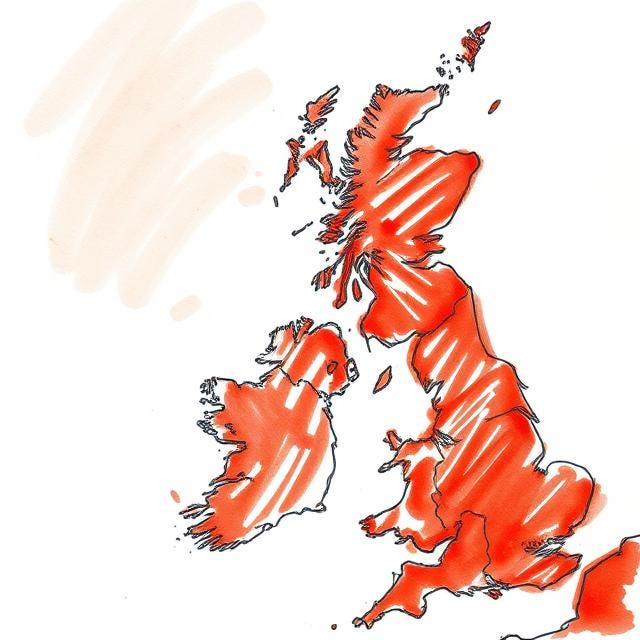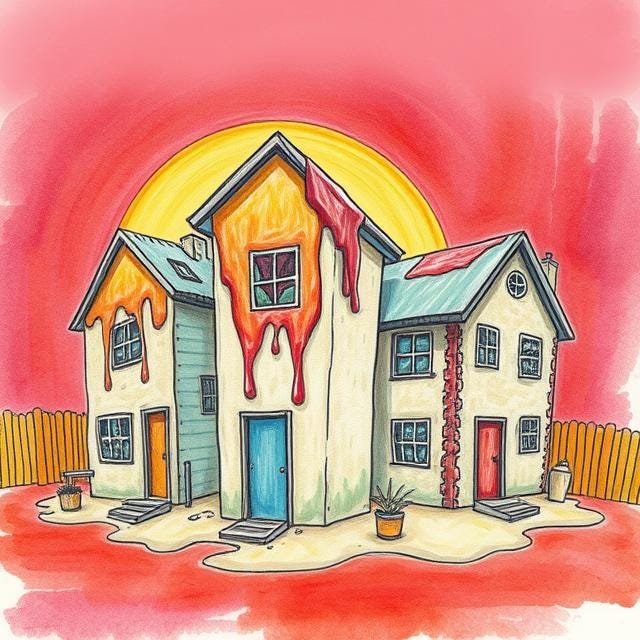It's getting hot in here
Preparing for Britain's new climate reality
Good morning, on what is expected to be another scorcher of a day, up and down the UK (or in Vienna, if that’s where you happen to be).
It seems like British summers are getting hotter and hotter. I’m sure I remember a rumour in High School that if the temperature passes 30°C, we get to go home. This year, the temperature has hit 30 twice already, with a third day potentially today.
But is it actually getting hotter, or does it just feel that way?
Well, 4 of the 5 hottest days of the last 100 years have happened since 2019. The decade from 2012 to 2021 was on average 1°C warmer than the 1961 to 1990 average.
It’s not just heat, of course. We’re seeing more and more extreme weather events like droughts, floods and storms in the UK year-on-year. Rainfall, for example, is up 7.3% since the 20th century, now with 5.2 million homes at risk from flooding.
So what?
The hot weather has a number of obvious and non-obvious effects. Research has found that violent crime is 14% higher on hotter days. Hot days cost the economy £1.2 billion per year, due to the productivity hit. Since 2020, more than 10,000 people have died before their time due to heatwaves and hot weather.
The UK simply isn’t built for the heat.
Our homes aren’t suitable. It’s estimated that fewer than 5% of homes have air conditioning. They are usually built to maximise the amount of sunlight that gets in, and to retain heat, which can create a sort of greenhouse effect.
Our infrastructure isn’t suitable. Seven London Underground lines still don’t have air con, and steel train tracks get too hot and buckle.
83% of the English population live in urban areas: and these urban areas get far hotter than more rural areas. Concrete roads absorb heat, while waste heat from cars and buildings compounds the problem. Water and trees, which have a cooling effect, are conspicuously absent.
What’s the solution?
It’s basically too late to debate whether we should or can reverse this effect, because it’s already started. That train has left the station (and it’s just about the only train that’s not delayed due to hot weather).
We can, and should, continue to work towards net zero to prevent things getting worse. But we also need to get serious about developing mitigations to the increasingly hot weather.
The answer cannot just be air conditioning. AC uses a huge amount of energy, and dumps hot air into the environment: in the long-term, this combination would make the country hotter rather than cooler.
Instead, our homes need better insulation, and we need to rapidly deploy heat pumps. Insulated homes stay cooler in summer, and warmer in winter - with less need for expensive energy generation. Heat pumps work by moving air rather than heating or cooling it: making them super energy efficient. The government should be subsidising the cost of heat pumps, and move ahead with its plans to mandate them in new-build homes.
There’s a place for AC. We’ll need to start installing the somewhat dystopian-sounding Climate Shelters in major cities. These are public spaces that are kept cool and accessible during hot weather, open to anyone in the public to escape the heat. We kind of ran a beta-test of this when energy bills surged in 2022, as libraries and museums opened as ‘warm havens’ over winter.
There will also need to be a concerted effort to incorporate more nature into urban planning. Trees planted in a park, for example, will cool a home up to 300 meters away. It’s why, in Singapore, half a million trees have been planted since 2020.
On climate change, the time has come to think about mitigation. As our weather gets wilder, this is what will save lives, jobs and homes from the heat, rain and wind that we can expect in the coming decades.



